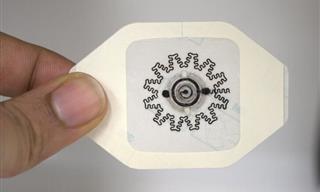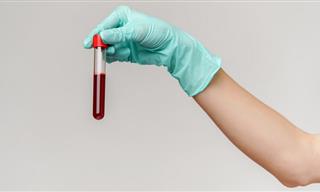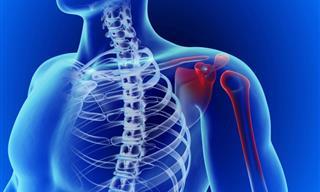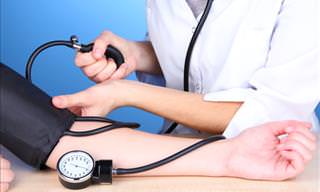A groundbreaking new study has revealed that the accuracy of your blood pressure reading may depend on something as simple as arm positioning. Published in JAMA Internal Medicine, the research notes that improper arm placement during a reading can lead to elevated systolic pressure—up to 7 points higher in some cases. Systolic pressure is the upper number in a blood pressure reading, indicating how much pressure is in the arteries when the heart pumps blood.
Related: These Spices Will Naturally Lower Your Blood Pressure
Lead researcher Dr. Tammy Brady, pediatrician and medical director of the pediatric hypertension program at Johns Hopkins Children's Center, was surprised by the magnitude of the difference. The study found that a dangling arm could significantly increase systolic readings. This discovery may have far-reaching consequences for measuring and diagnosing blood pressure.
The Experiment: What Did the Study Find?
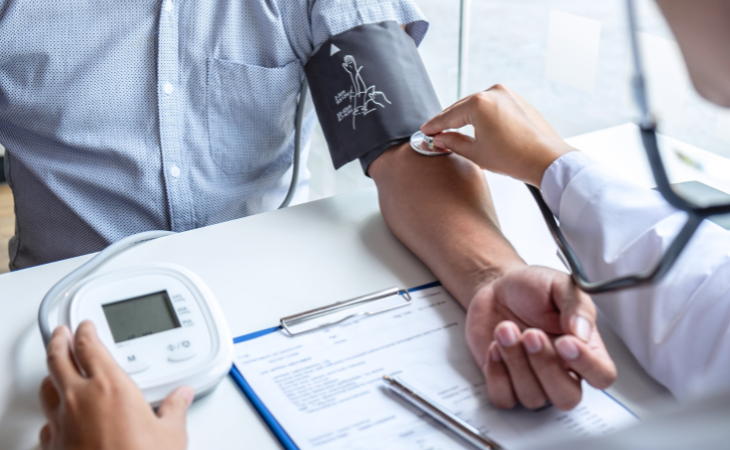
The study involved 133 adult participants. The volunteers' ages ranged from 18 to 80, and each had their blood pressure measured in three distinct arm positions: resting on a surface, on the lap, and hanging by the side.
The results were telling. When arms were left hanging by the side, systolic pressure increased by an average of 6.5 points compared to the proper arm support on a surface. Meanwhile, diastolic pressure (the lower number, which measures pressure in the arteries between heartbeats) also increased by 4.4 points. Even when resting arms on laps, the systolic pressure was still elevated by 3.9 points, and diastolic pressure increased by 4 points.
These differences might not seem like much, but they can mean the difference between a normal blood pressure reading and a diagnosis of stage 2 hypertension. For example, a real reading of 134 could be inflated to over 140, leading to unnecessary medications and misdiagnoses.
Misdiagnosis: The Risks of Incorrect Blood Pressure Readings
This research highlights the critical role proper arm positioning plays in blood pressure measurement. With millions of adults living with high blood pressure, or hypertension, the stakes are high. Hypertension is defined as having systolic pressure above 120 and diastolic pressure over 80. Left untreated, high blood pressure can lead to serious health risks like stroke, heart attack, and other cardiovascular conditions.
The study raises concerns about widespread misdiagnosis due to improper technique. Health experts say that patients are often victims of mispositioned arms during routine checkups. This simple error could lead to unnecessary treatments, which come with side effects such as dizziness, fatigue, and blurred vision.
Related: 4 Unexpected Habits That Affect Your Blood Pressure
The Science Behind Arm Position and Blood Pressure

But why does arm position affect blood pressure readings so significantly? According to researchers, gravity plays a big role. When your arm is below heart level—whether resting on your lap or hanging by your side—gravity increases pressure in the arteries. Furthermore, muscle tension in these positions can disrupt blood flow, causing temporary spikes in blood pressure.
This means that an accurate reading isn’t just about strapping on a cuff—it requires careful positioning. The American Heart Association says that your arm should be supported at heart level, feet flat on the floor, and the back supported. Avoiding exercise, caffeine, and smoking for 30 minutes before the test also ensures more accurate results.
Real-World Implications: A Call for Change
Dr. Tammy Brady and her colleagues hope this study prompts both patients and healthcare providers to pay more attention to technique. With many patients already suffering from white-coat syndrome (elevated blood pressure due to anxiety during a doctor’s visit), the last thing they need is an inaccurate reading caused by something as simple as arm positioning.
Patients should feel empowered to ask for proper arm support during their blood pressure reading, Brady explained. This small step could prevent unnecessary prescriptions and ensure patients receive the most accurate diagnosis.
Practical Tips for Accurate Blood Pressure Readings

This study is a wake-up call for healthcare professionals, as well as for individuals who monitor their blood pressure at home. Ensuring the correct arm positioning is essential for obtaining an accurate measurement. Here are a few simple tips to keep in mind:
- Support your arm: Always ensure that your arm is resting on a surface at heart level. This minimizes the gravitational impact on blood flow and prevents muscle tension.
- Keep your feet flat: Ensure your feet are planted on the ground with your back supported. Sitting upright improves blood flow and reduces false readings.
- Avoid certain triggers: Refrain from consuming caffeine, smoking, or exercising 30 minutes before the measurement to ensure the reading is not artificially elevated.
- Relax and breathe: Tension can raise your blood pressure temporarily. Take a few deep breaths and relax before taking the reading.
Why Accurate Readings Matter
Hypertension can often go unnoticed, as it doesn’t always present symptoms. However, over time, high blood pressure can damage the arteries and lead to long-term health problems, including heart disease, stroke, and kidney issues. Misdiagnosis can not only lead to unnecessary medications but also delay proper treatment for those who genuinely need it.
Given the gravity of this issue, accurate blood pressure readings are crucial for effective health management. Dr. Brady’s study highlights the importance of standardized techniques and calls for a more vigilant approach from both healthcare providers and patients.
Related: Lower Blood Pressure in 10 MINUTES by Doing These Things
A Simple Fix With Major Benefits
In conclusion, something as simple as how you position your arm can have a big impact on your health. This study serves as a reminder that we must be vigilant in ensuring accurate techniques during routine medical checks, especially for something as important as blood pressure. The correct positioning of your arm will allow you to control your health and ensure that you receive the most accurate readings.
Next time you're at the doctor's office or taking a reading at home, don’t hesitate to ask for proper arm support. It’s a small adjustment that could make a big difference in your diagnosis and overall well-being.
 Go to BabaMail
Go to BabaMail
























